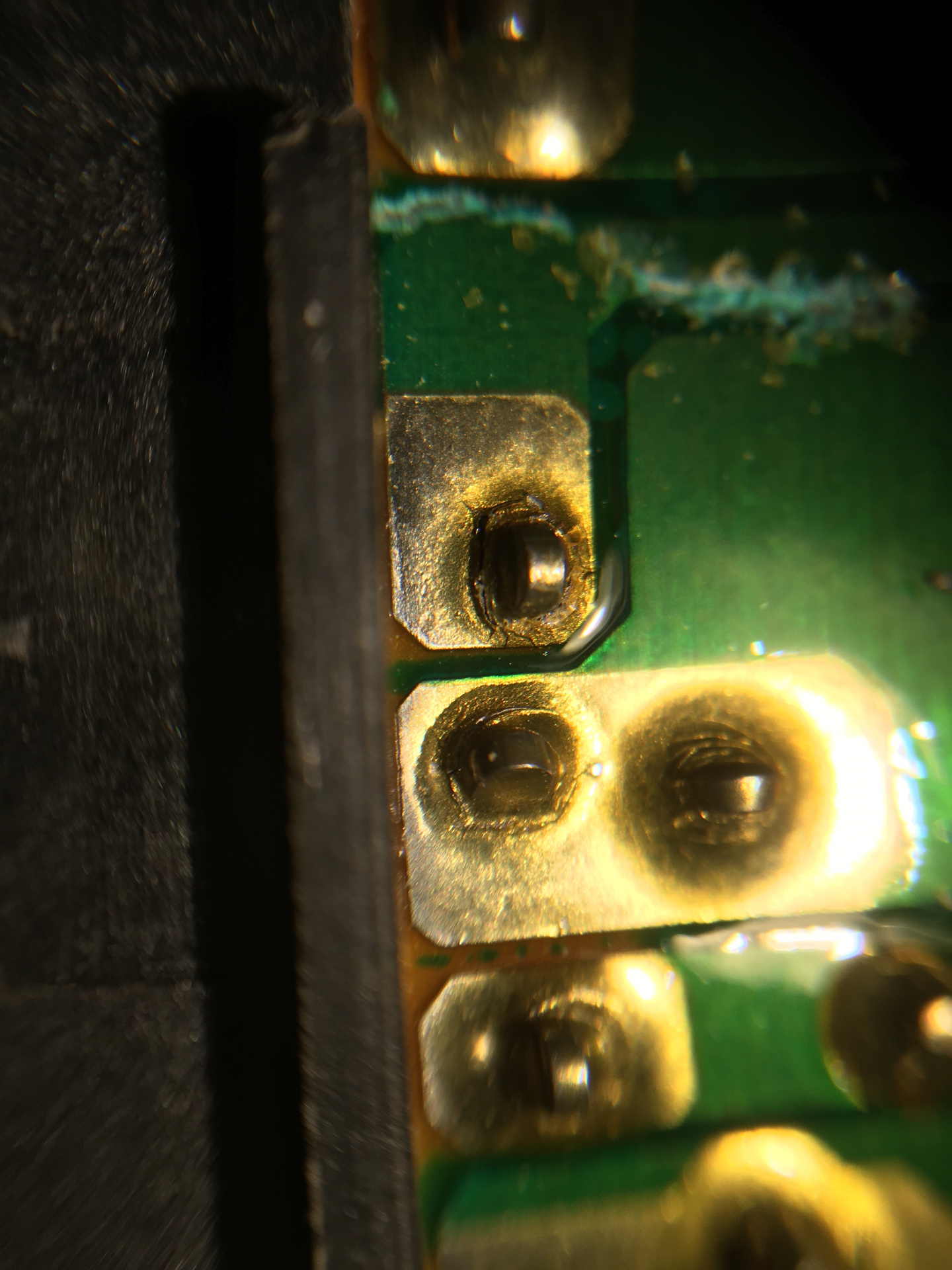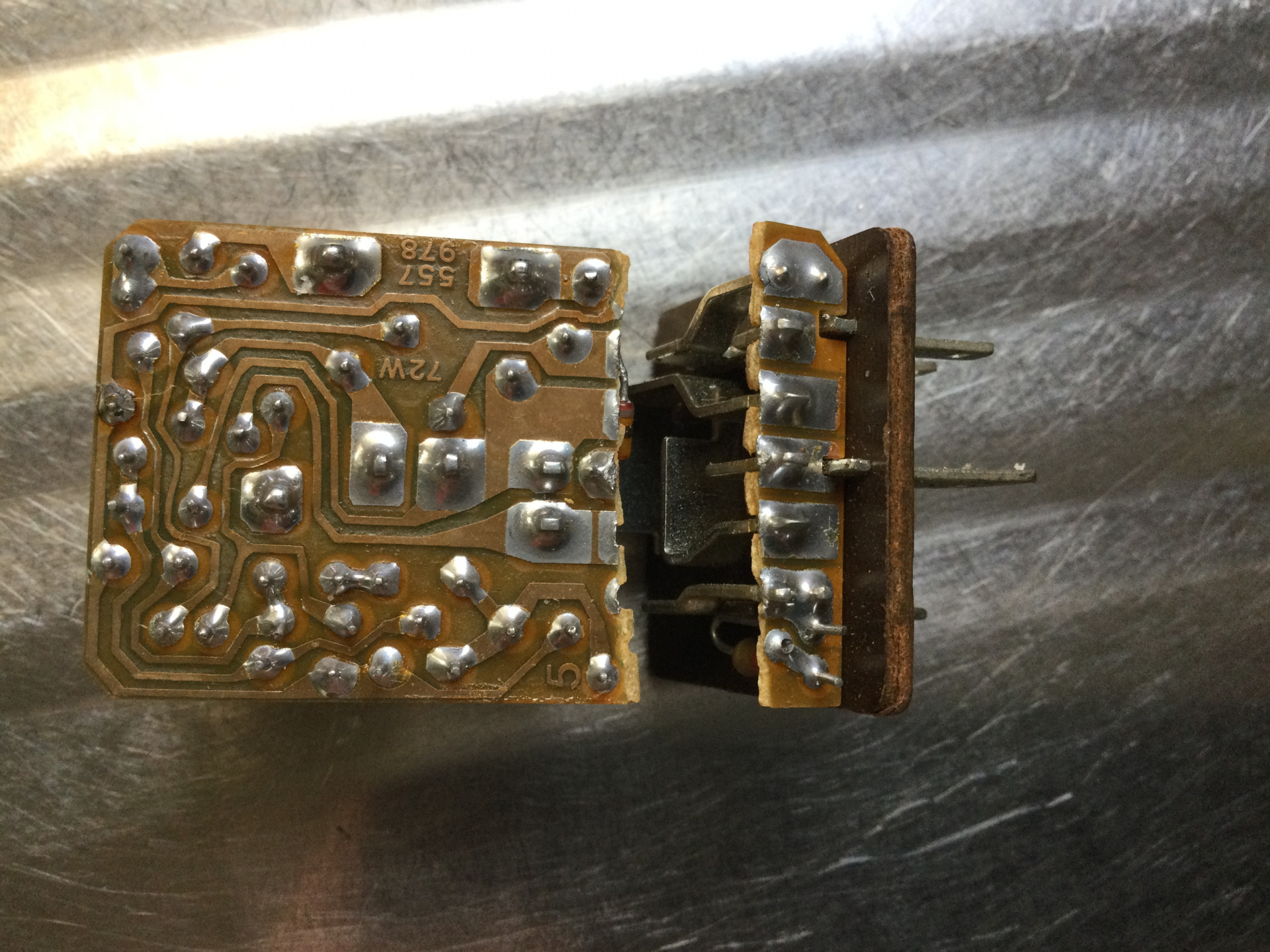- Edited
Over the years I have had an assortment of problems with various Volvo relays. It turns out that the electronics are usually just fine, but for some reason the solder on the circuit boards seems to go crystalline and let go. This seems to be particularly bad on the mounting pins and may be a result of heat cycles and/or vibration. Volvo relays seem to run hot. One of the worst offenders is the overdrive relay on early Auto Trans cars. Those are normally energized and only de-powered when the overdrive switch is pressed. Some people drill small air vent holes in the cover to help cooling. Probably a good idea.
I recently bought a really nice 760 Turbo that had an assortment of relay issues. Principally, the headlight relay was bad. (High beams would not latch on.) On this car, the relays are held in with little clips and were a pain to get out. I had to pull every relay out to get to the headlight relay. So I popped each of them open and inspected and repaired them all. Before I reinstalled them, I ground off the locking nubs so I can get them out much easier if I ever have to.
Here's some pics:
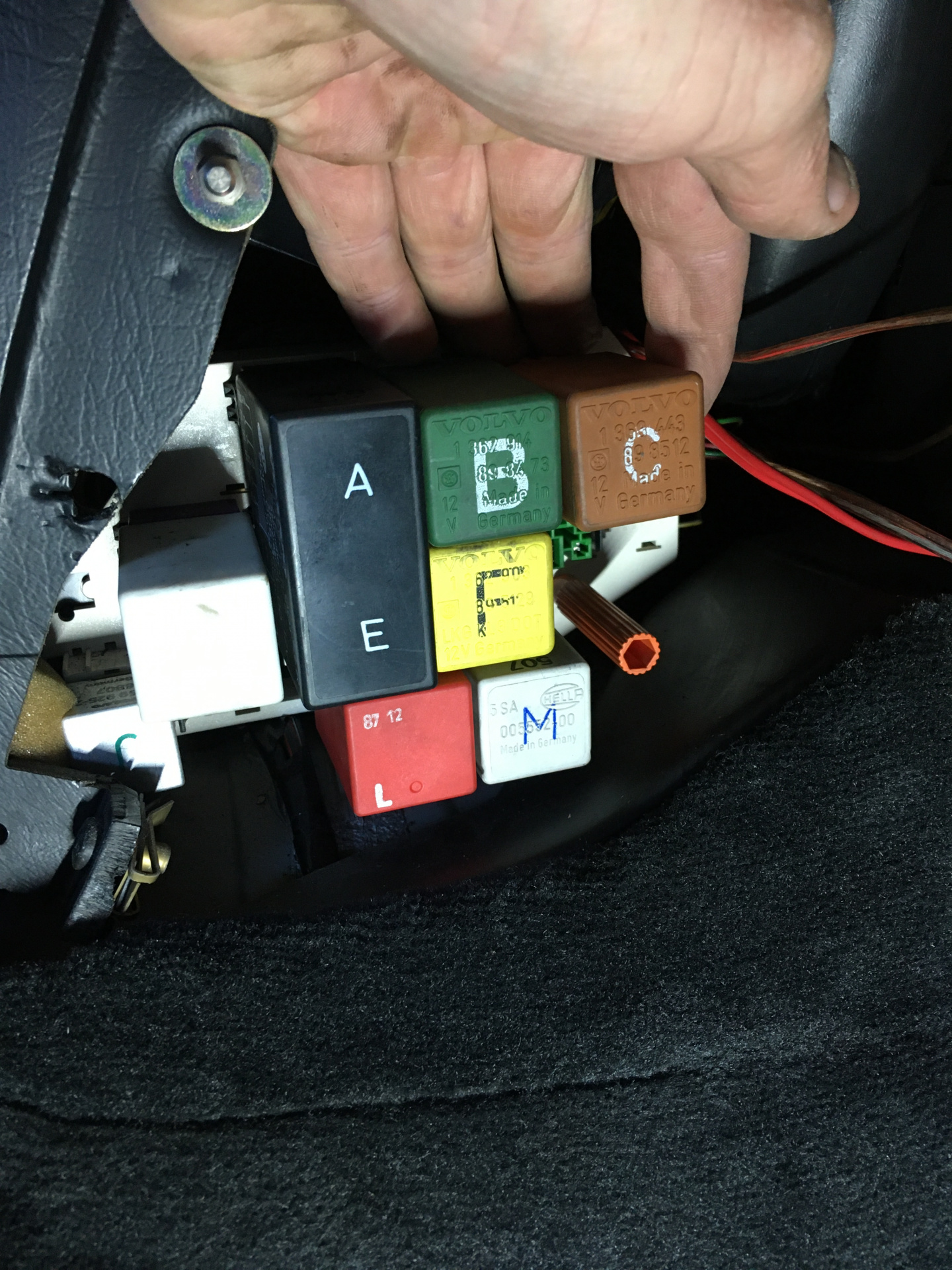
This is the double headlight relay off my 760. Very hard to find in working condition now, and therefore expensive.
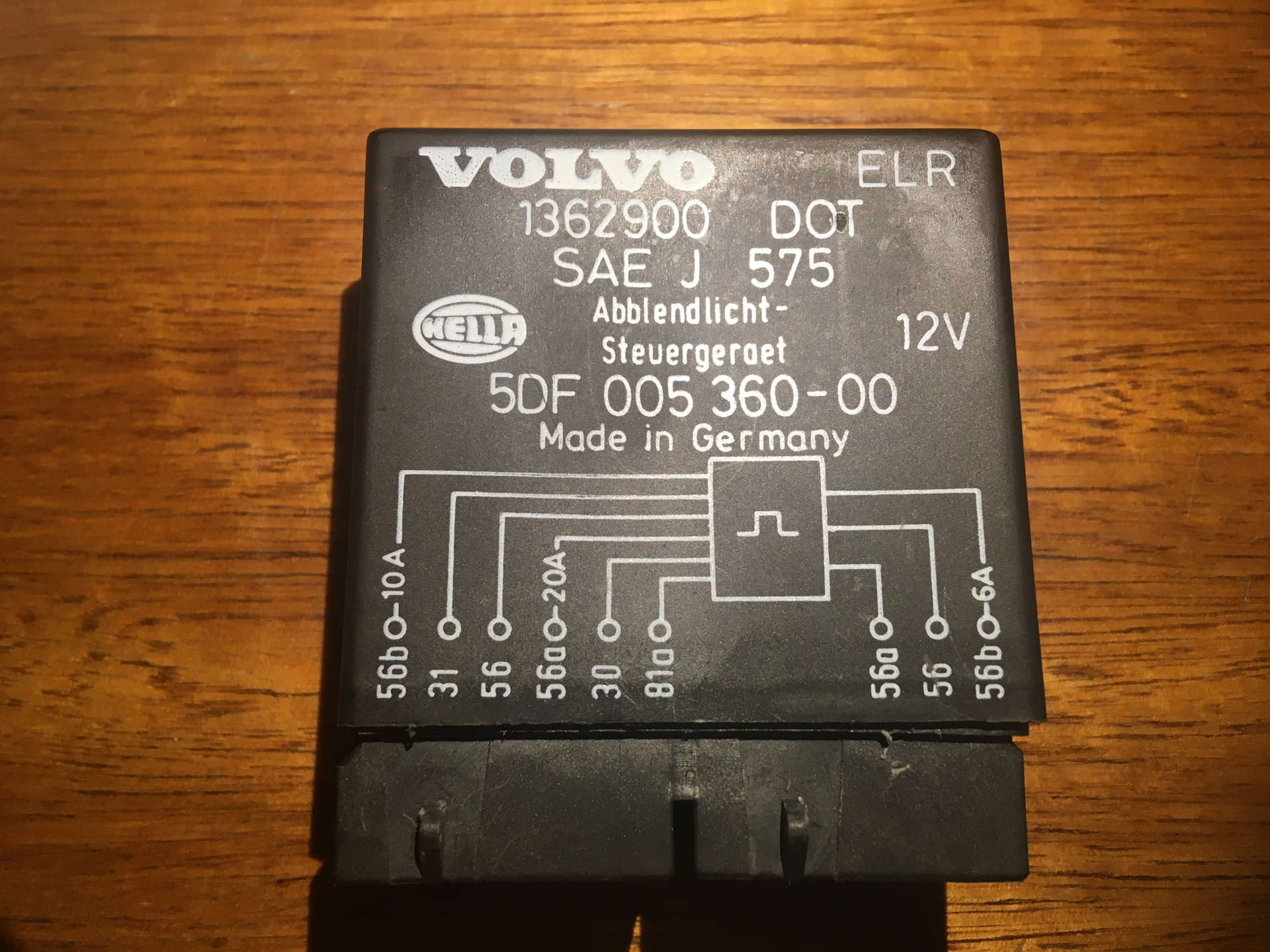
Using a small sharp pick you can pry around the edges and pop the cover off.
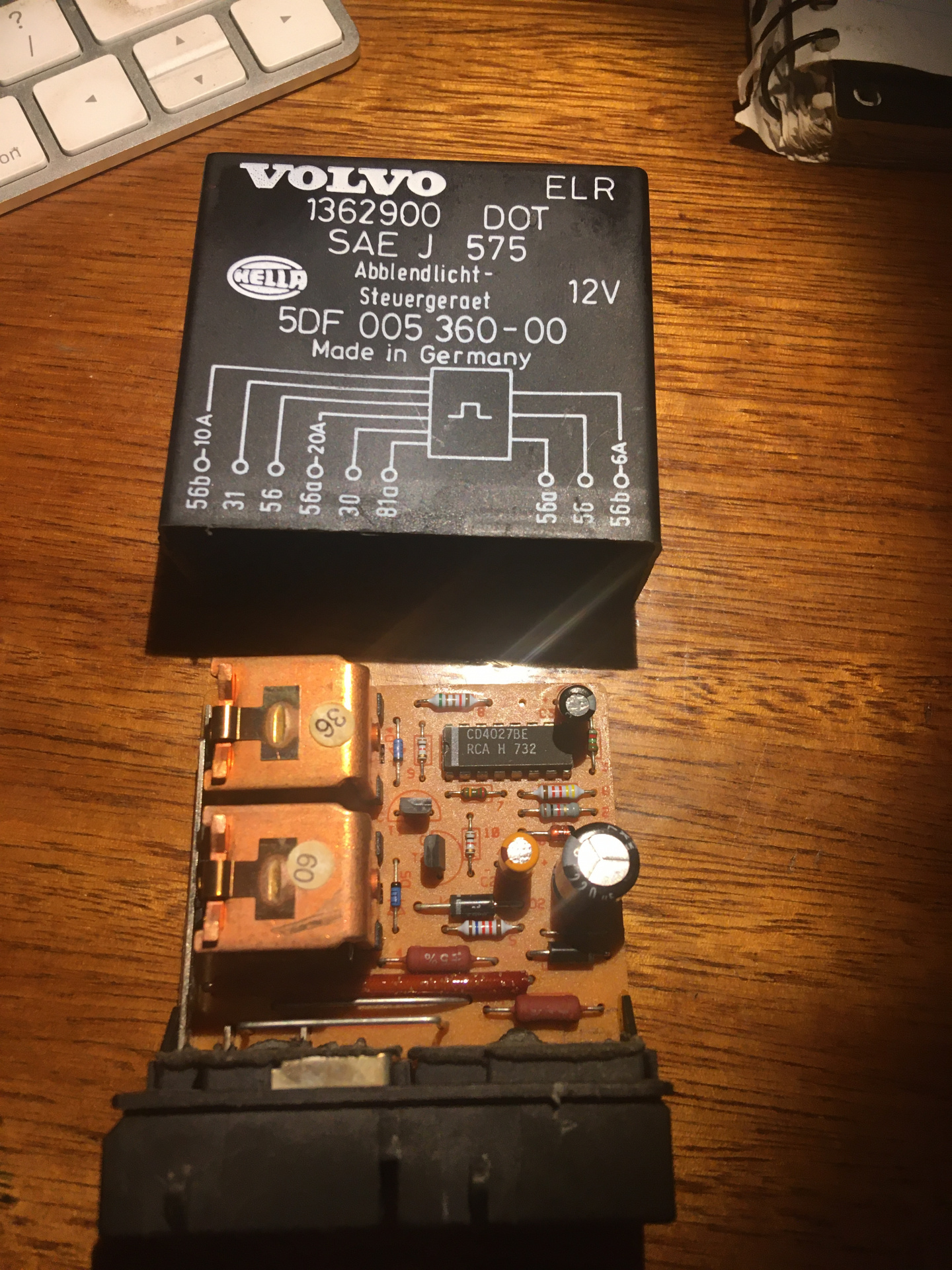
Here is the board. Not much to see.
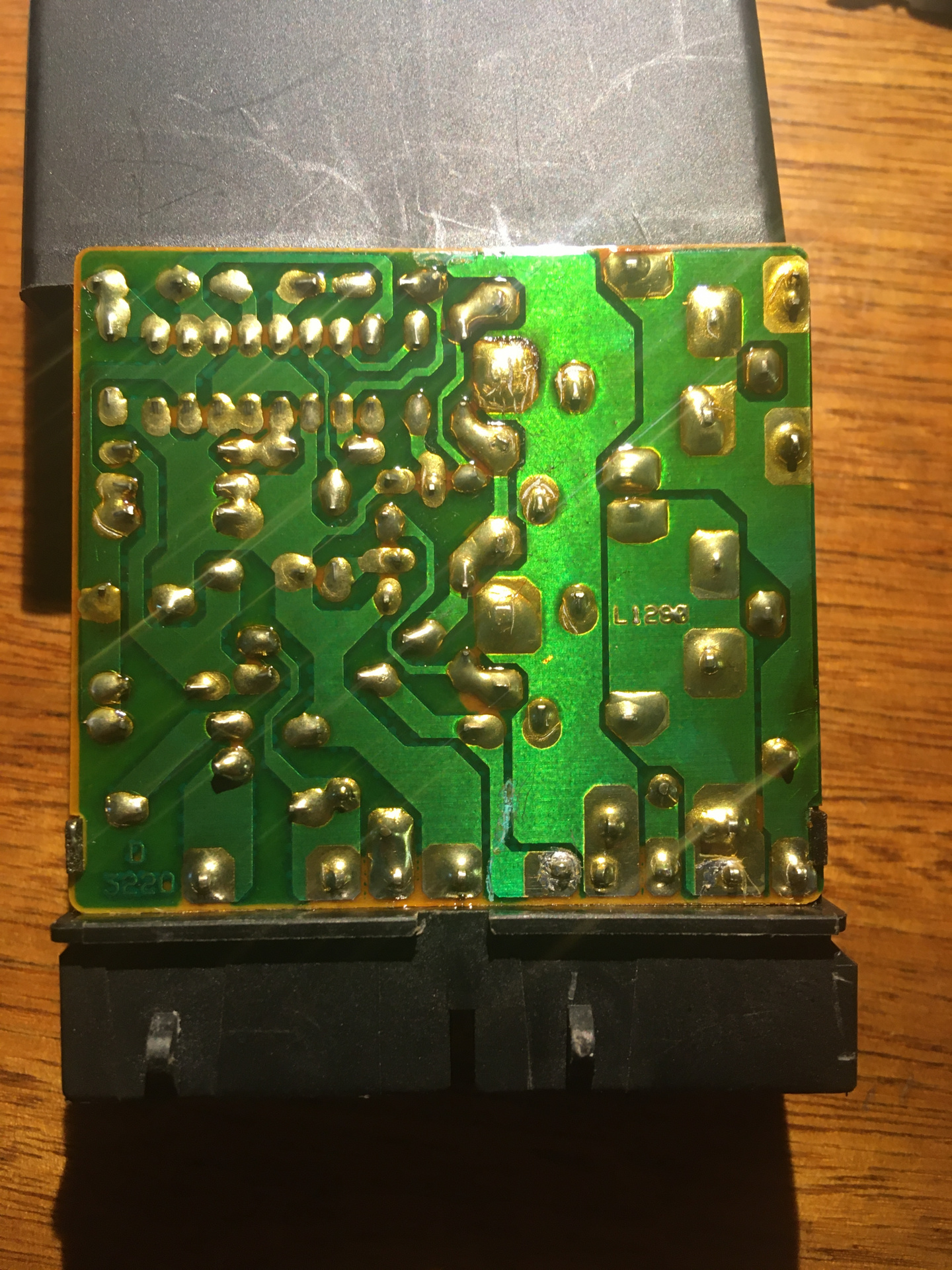
But, get hold of a stereo-scopic microscope. Not a binocular microscope. Stereo scopes give a true 3D view. They are cheap on e-Bay and great to inspire kids in science projects. I bought mine when we were home-schooling. But I use it all the time. Even for getting out splinters.
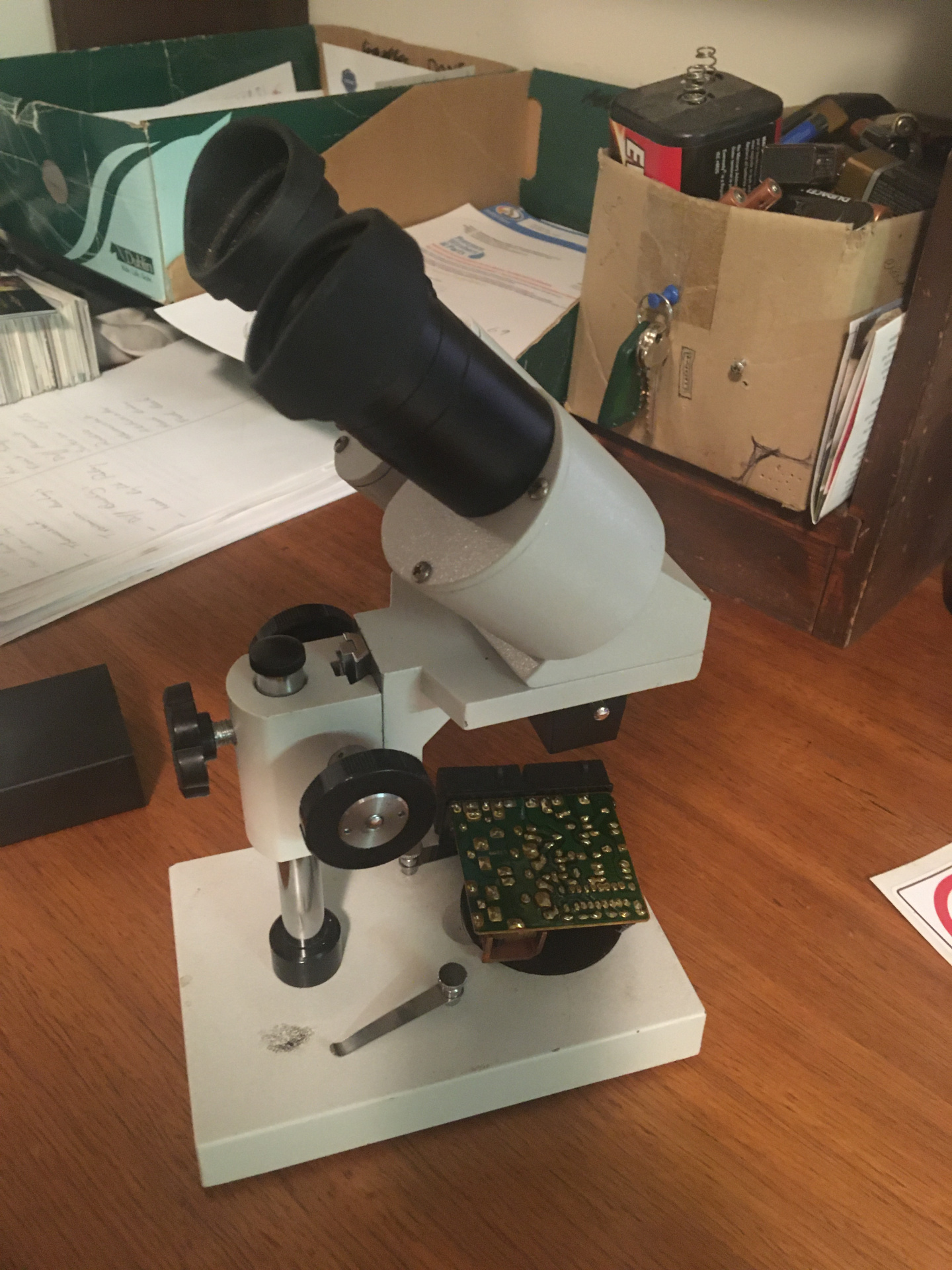
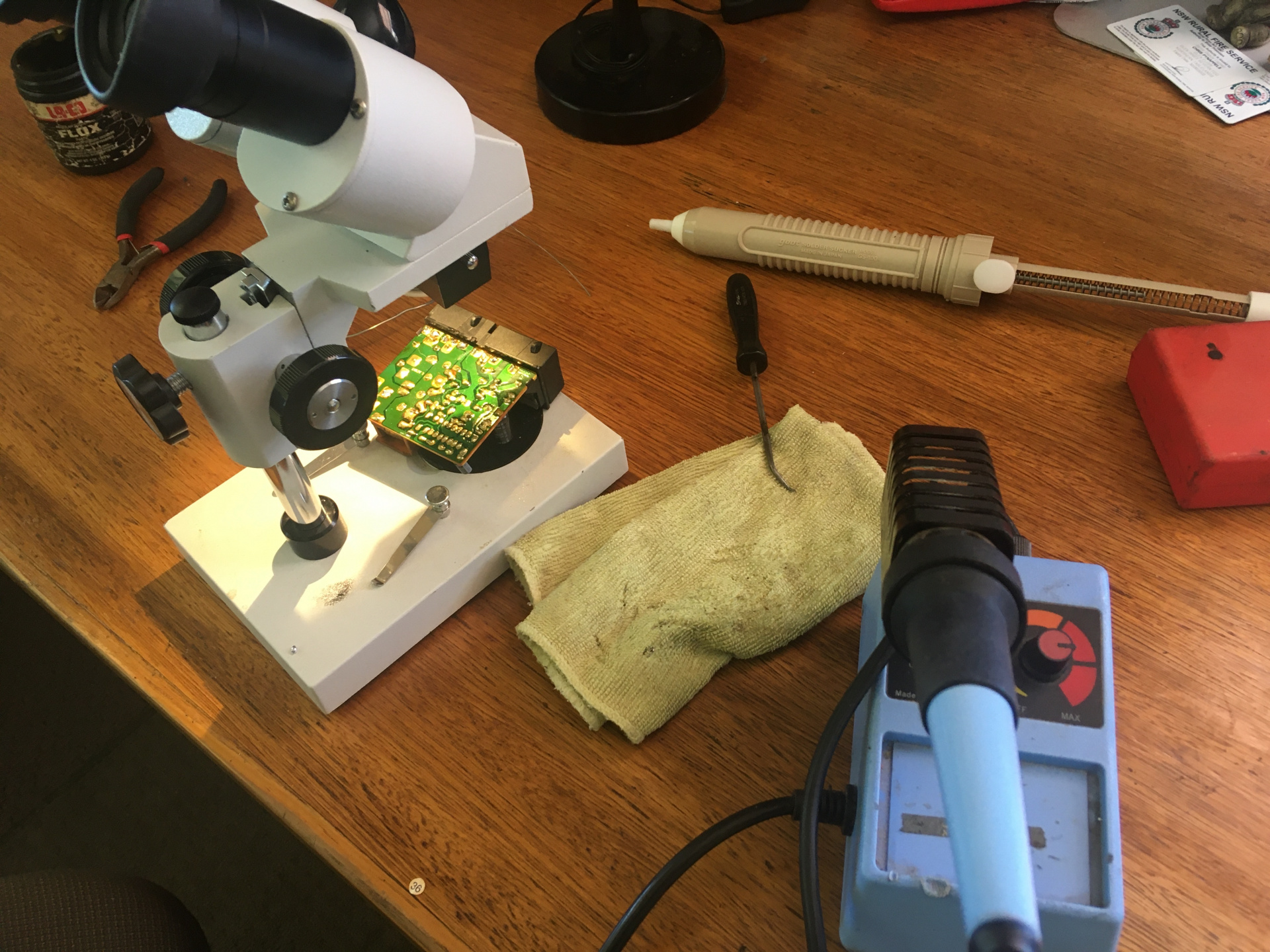
You will also need a powerful soldering iron and flux cored solder. The old solder has quite a high melting point and my cheap iron was only just adequate. You don't want to overheat components by holding your iron on the pin too long, waiting for the solder to melt. You need to do the job quickly. (Check Youtube for soldering hints. ) The boards also seem to be coated in some sort of lacquer. I tried to scrape most of it off before soldering the pin.
Here are few shots of some of bad pins I found. I simply held my smart phone up to one lens on the stereo scope and took the photo. It worked surprisingly well.
Many pins were cracked all the way around, or nearly so, and some were actually loose. I just re-flowed the solder and job done. Headlights now work. So does the bulb failure relay and sun roof. I should have taken a snap of a re-flowed pin, but forgot to.
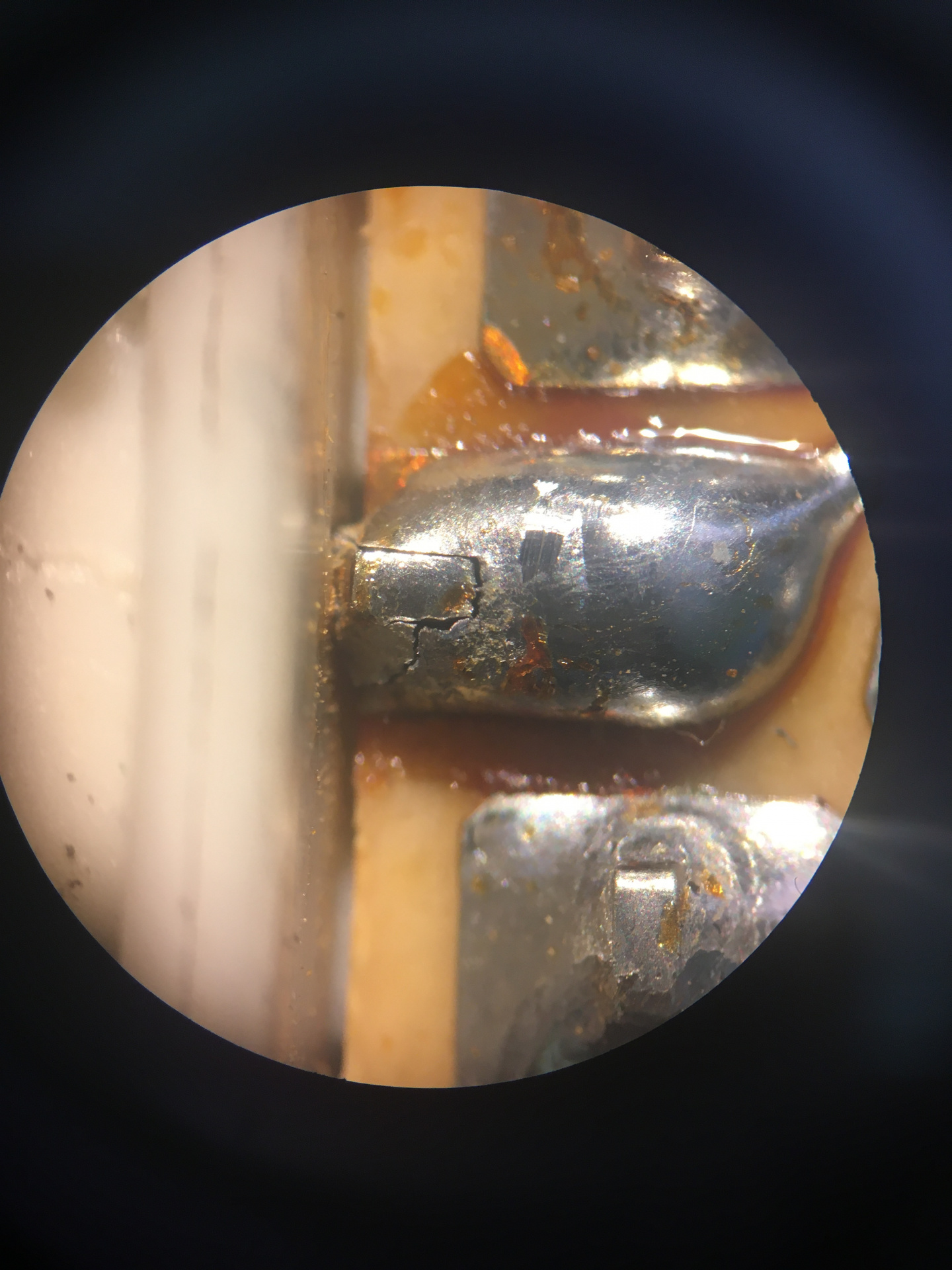
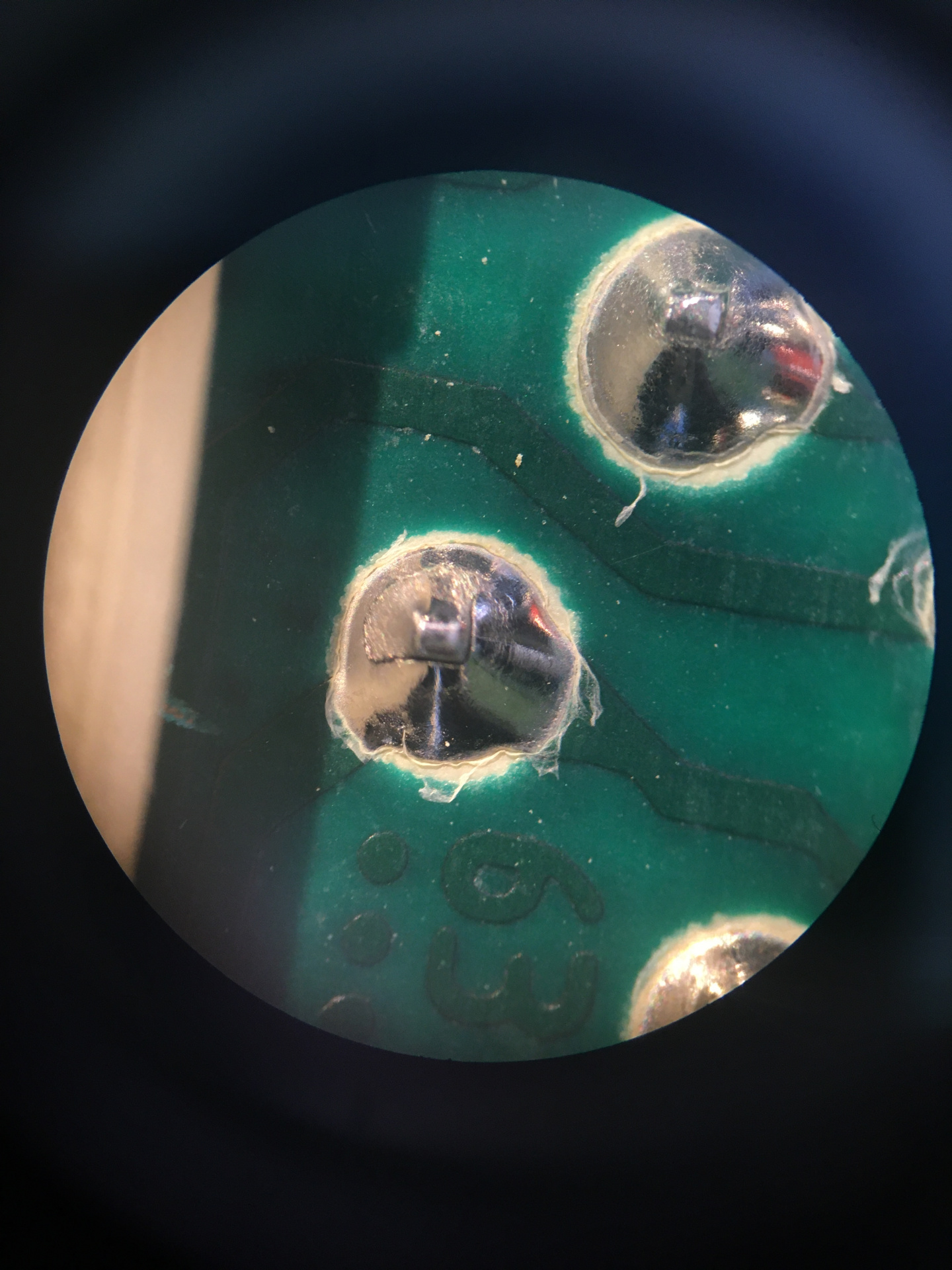
This was the headlight relay and the pin was loose. Several others were cracked and almost broken free. It all works fine now.
